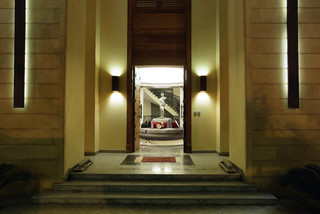Ideas for creating great lighting in your home
Determining the lighting needs and style during your home build, home renovation, or redesign is not one to be taken lightly (yes pun intended). Your home lighting has the ability to affect our mood as well as provide a certain ambiance within a room so get it wrong and you could be paying in more ways than one. It’s fair to say that different rooms have different lighting requirements depending on whether your preference is mood, functionality, both or something completely different. Therefore, before hitting the shops and showrooms, it’s important to have a clear understanding of your lighting objective for each room that’s on your project scope.
Before we get into specifics, let’s talk lighting generally. Home lighting styles are divided into 3 clear lighting types – task lighting, ambient lighting and accent lighting. Task lighting provides distraction free lighting to work under and is effective in kitchens, bathrooms and work areas where you really need to see what you’re doing. Ambient lighting provides general lighting of an areas and accent lights are designed (as they sound) to highlight places within the home including pieces of furniture, artwork, doorways and other things you want to draw eyes to. Accent lights usually provide drama to a room. When developing the lighting plan for your home, select the objective you plan to achieve with the lighting which will provide you with your primary lighting source then layer the room with other lighting.
Here’s some useful ideas for creating fabulous lighting within your home:
Layering
When designing your home lighting – think in terms of layering. Whilst you might select a decorative ambient light for your dining room, it probably won’t throw enough lighting within the area to be functional therefore accent lighting along walls or behind furniture or highlighting areas of the room can bring ambience to the room without affecting the mood or magic you’re trying to create with your decorative light. Use different types of lighting within one to compliment the other or to provide the option of changing the mood of a room as required.
Bathrooms
As a high traffic area in the home, lighting for your bathroom needs careful thought. Considering that makeup application, beauty routines and shaving are frequent activities, lighting should be sufficient within this space to accommodate that. Mirrors should be clear of shadows (no one wants to see extra dark circles under their eyes resulting from a poorly placed light) and lighting should be front on (without blasting anyone’s eyes first thing in the morning) from the front instead of behind.
Kitchen
Task lighting above workbenches, sinks and stovetops are important within the kitchen and down lights are a popular choice for these areas. Whatever task lighting you use within a kitchen area, be sure to position lights in front of working areas to prevent shadowing the workspace. Whilst they provide a great option for illumination, having down lights and task lights installed with dimmers provides the option for energy saving and increased ambience when the day is done, dinner is eaten and kids are all tucked up in bed.
Kid’s Rooms
The options for lighting kids’ rooms are endless depending on ages of your children and the style of your home. However if you have really little ones, night lighting will more than likely be a consideration. Consider dimmed, warm night lighting for children’s rooms for night-time wake-ups or nappy changes. A well-placed table lamp or wall sconce with a dimmer can provide both functionality as well as ambiance for a child’s bedroom to get you through those early years.
Decorative lighting
Decorative lights, in particular chandeliers make a real statement within formal areas, dining rooms, stairwells and even bedrooms and are found in a mixture of both modern and traditional style homes. These style of lighting fixtures are a great way to provide a bold feature within a large area but shouldn’t over-power that particular space. When choosing large decorative lighting and chandelier fixtures, consider the size and height of the room and how much clearance you will have once it’s fitted. There’s nothing more annoying for a dinner guest than banging their head on your newly installed chandelier – no matter how pretty it is. It’s also worth considering the longevity of the light? Will it last the test of time or will it be a dated fixture by the end of the year? Lastly, whilst they are a gorgeous focal point for a room, a chandelier shouldn’t be the only lighting source. Remember to layer and consider installing accent lights throughout the room to ensure sufficient ambient lighting.

This gorgeous chandelier from Ivory and Deene
Outdoor lighting
When talking home lighting design, the outdoor area of the home is often the forgotten cousin. Outdoor lighting should provide careful balance between throwing enough ambient lighting for security and safety whilst not being so bright to obliterate your electricity bill or annoy your neighbours. security, cost and not annoying the neighbours.
Install Dimmers
Including the installation of dimmers in your lighting plan adds to the opportunity to change and adjust mood as required. Dimmers also extend the life of your light bulbs and increase your homes energy efficiency. We have a range of gorgeous glass European style dimmers in our Luminosa range.
Capitalise on natural light
Finally, when working through your home lighting plan, don’t forget about maximising your usage of natural lighting through windows, doors and skylights.
Designing the lighting for your home is an exciting part of your home building or home renovation project. Taking the time to plan what you’re hoping to achieve from the lighting of each room will ensure you end up with a balance between mood and functionality.
What lighting styles do you have (or are you planning) for your home?






